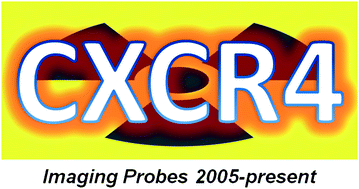Nuclear (PET/SPECT) and optical imaging probes targeting the CXCR4 chemokine receptor
James C. Knight and Frank R. Wuest
Chemokines are a family of small cytokines which are known to activate G protein-coupled receptors thereby inducing cellular migration. So far, approximately 50 chemokines and 20 chemokine receptors have been identified which collectively form the human chemokine system.
The chemokine receptor CXCR4 has been found to be highly expressed in a wide variety of cancer types. It has also been shown that these elevated expression levels are yet further increased upon metastasis. This means that this receptor is a highly attractive target which could facilitate the diagnostic imaging of many aggressive cancers.
In this review James C. Knight and Frank R. Wuest, from University of Alberta, aim to provide a comprehensive overview of the application of CXCR4-targeted imaging probes across both nuclear (positron emission tomography/single-photon emission computed tomography) and optical modalities, which includes a detailed analysis of the chemical aspects of probe design.











